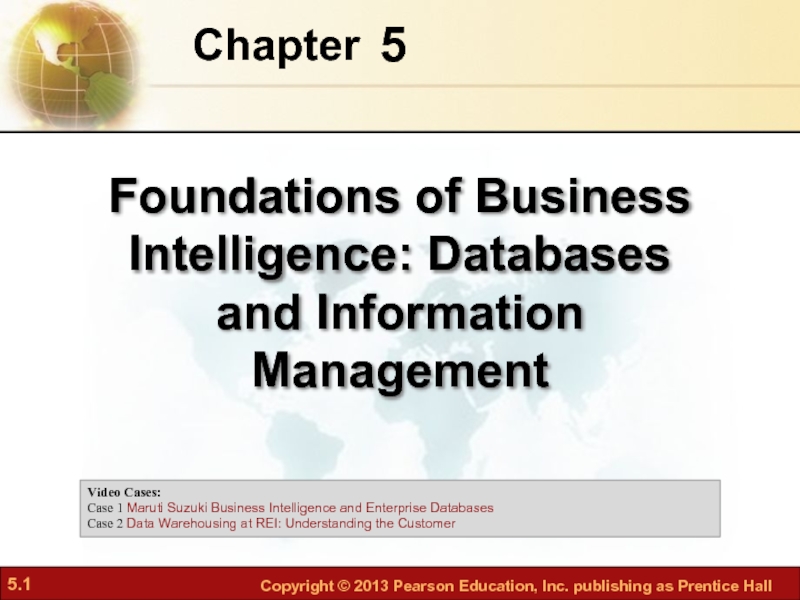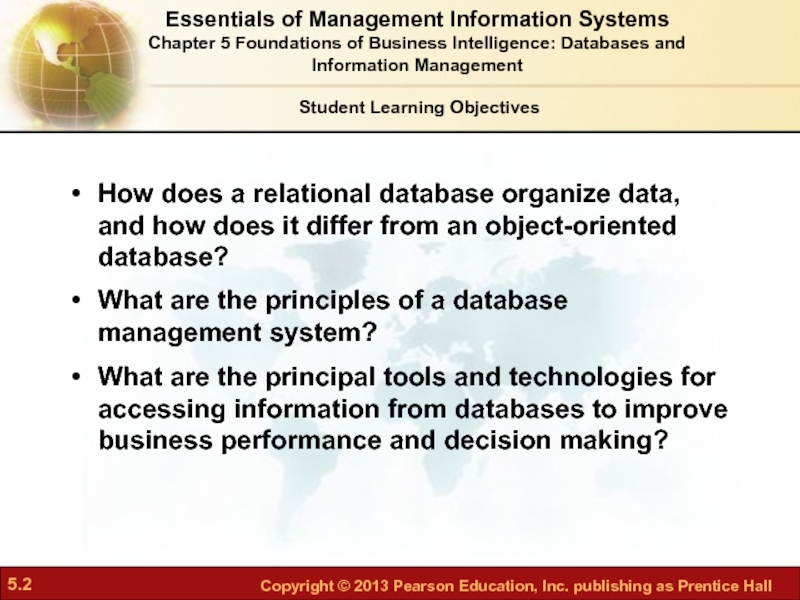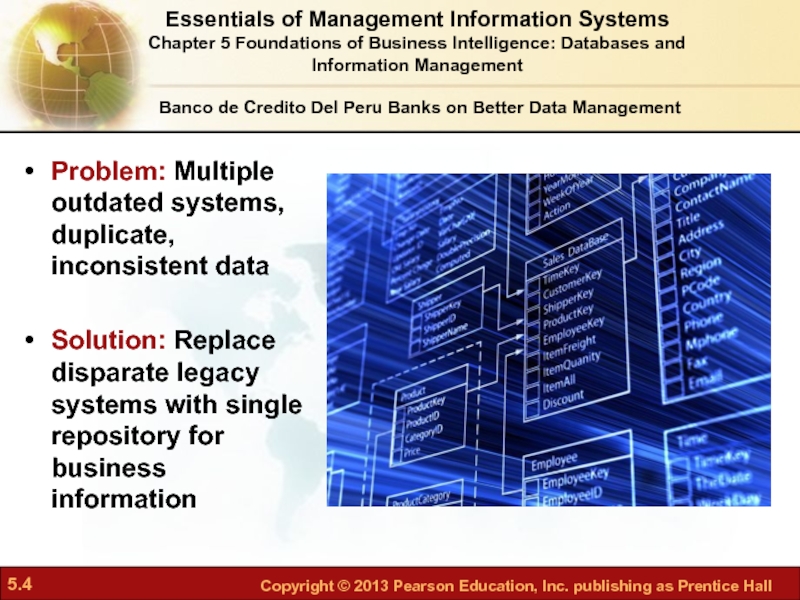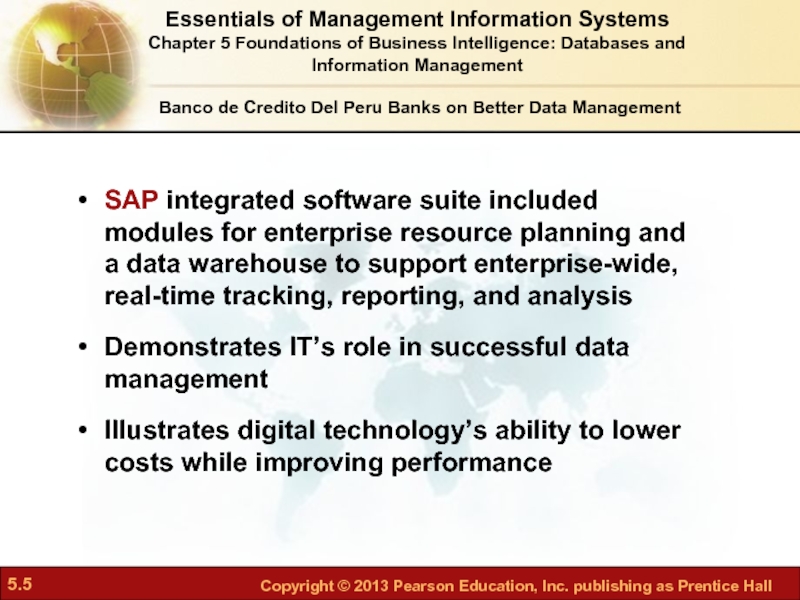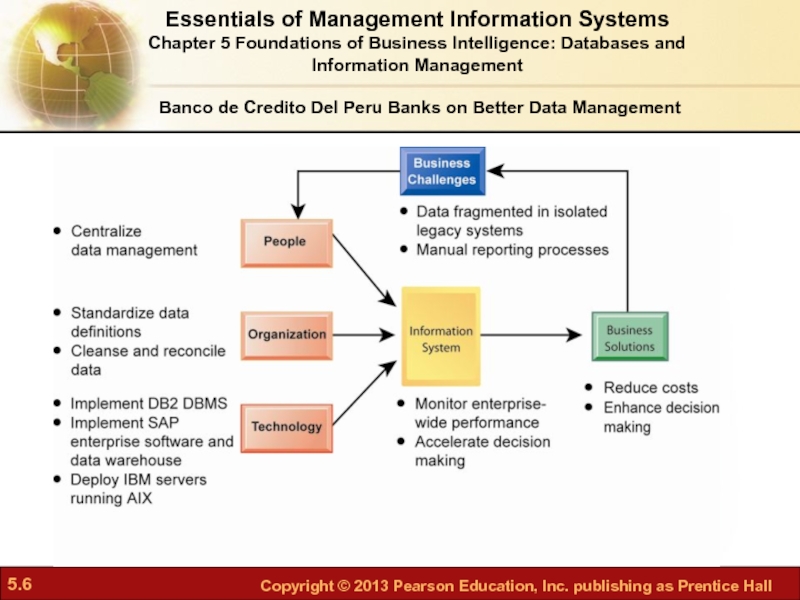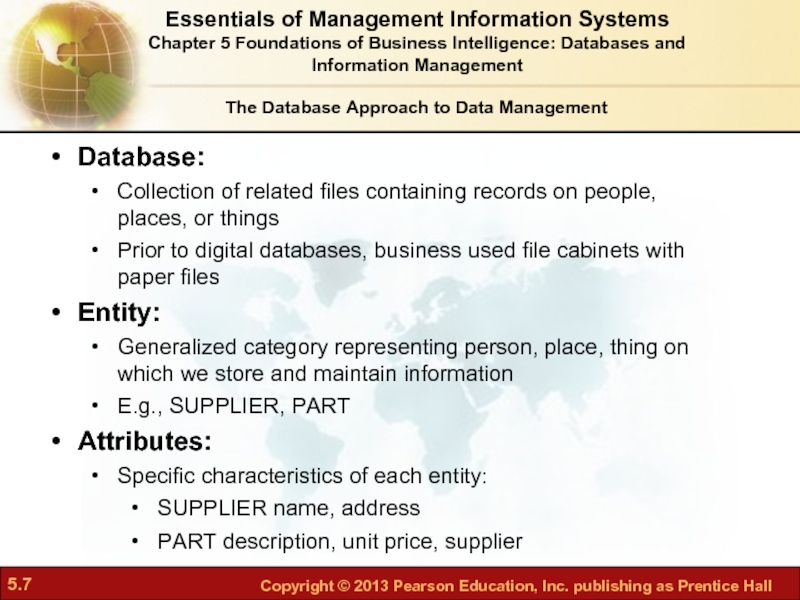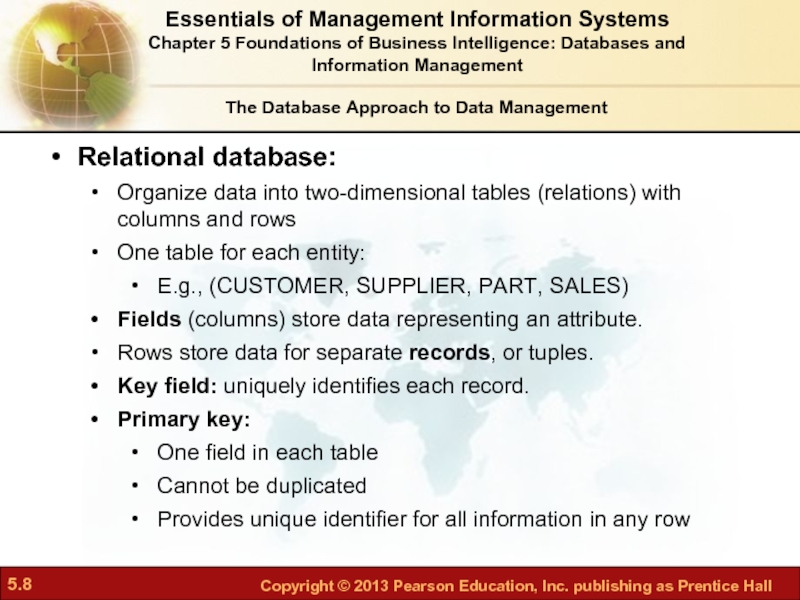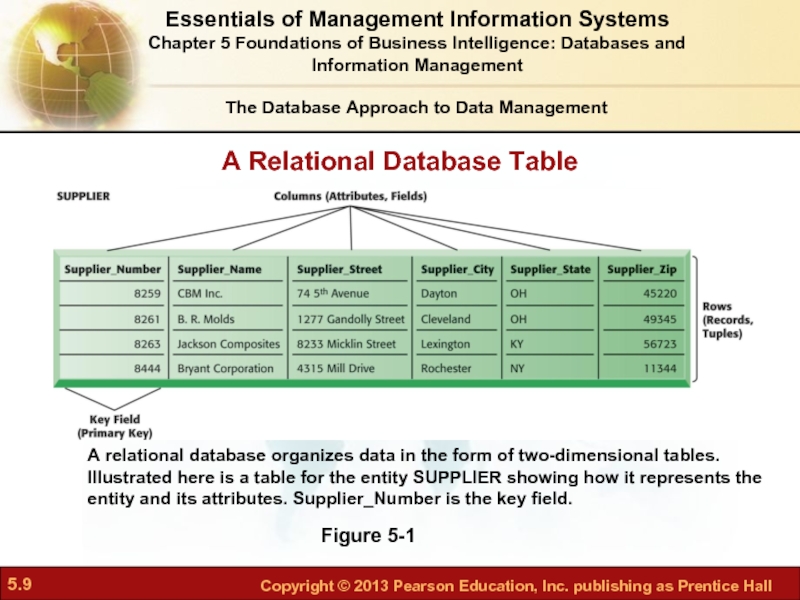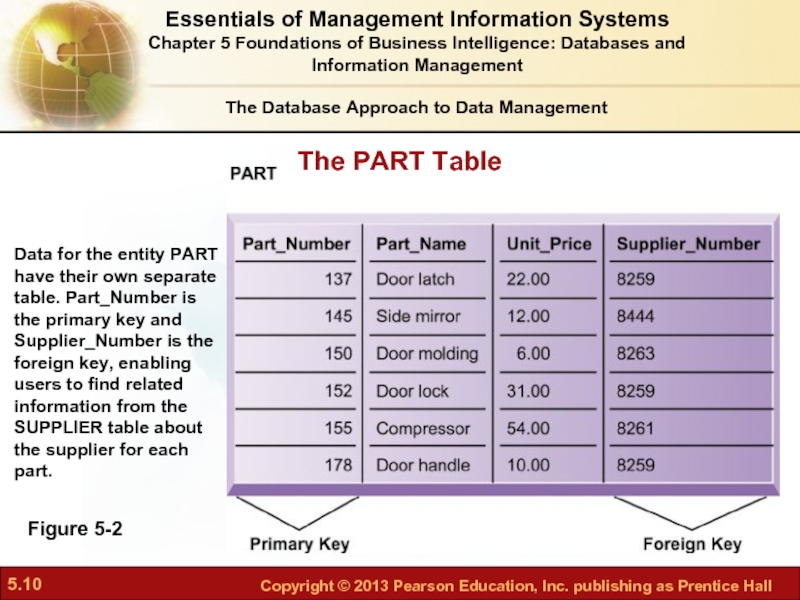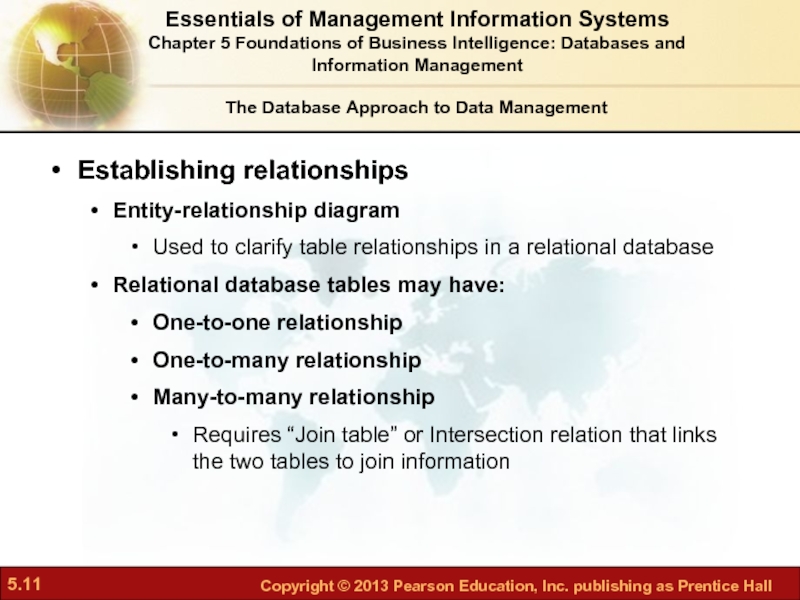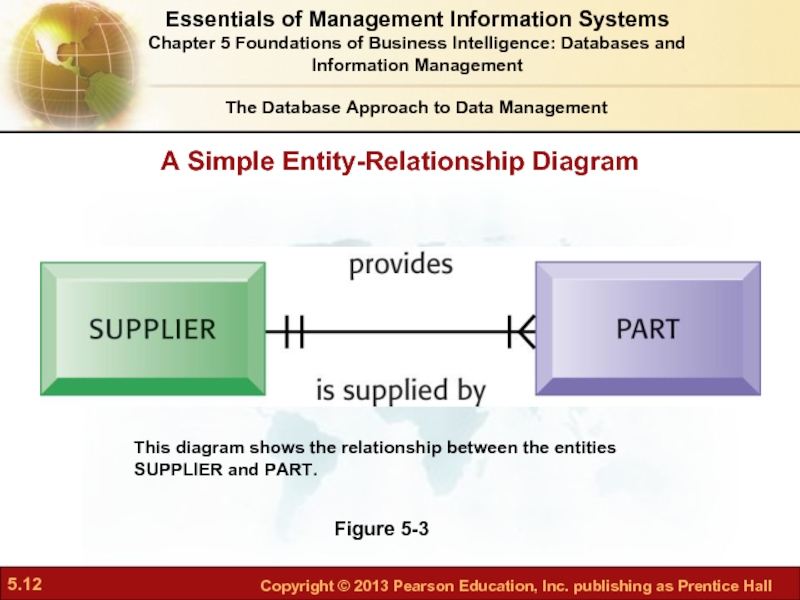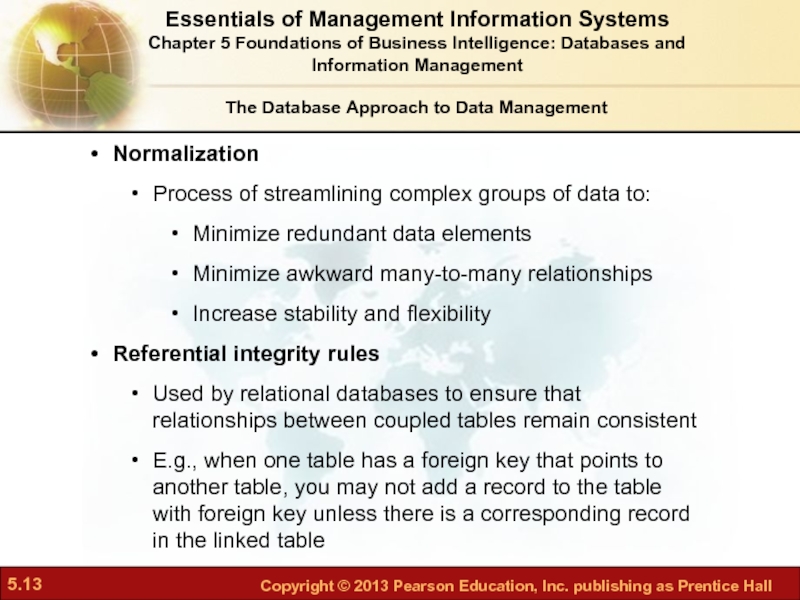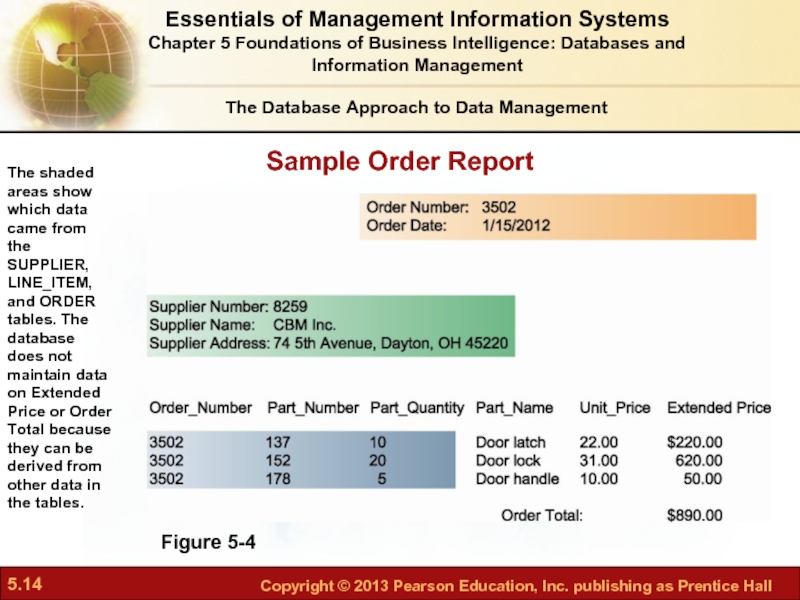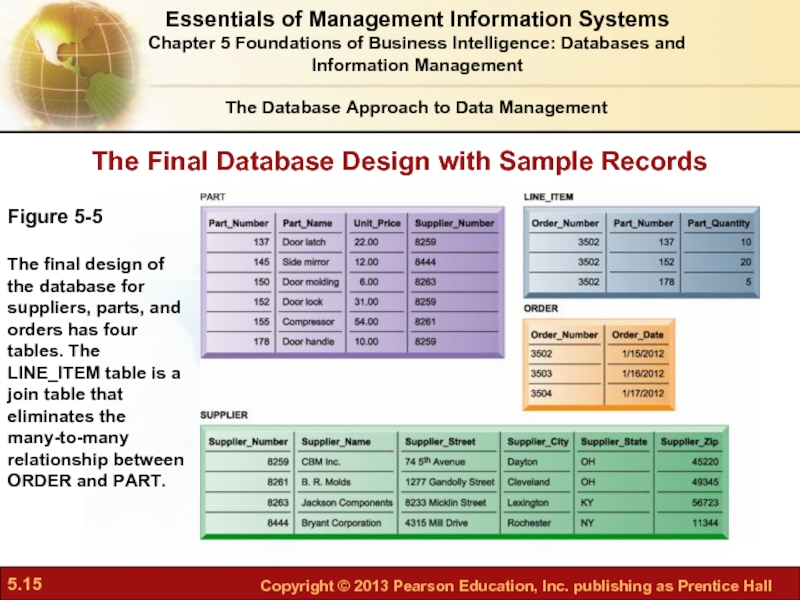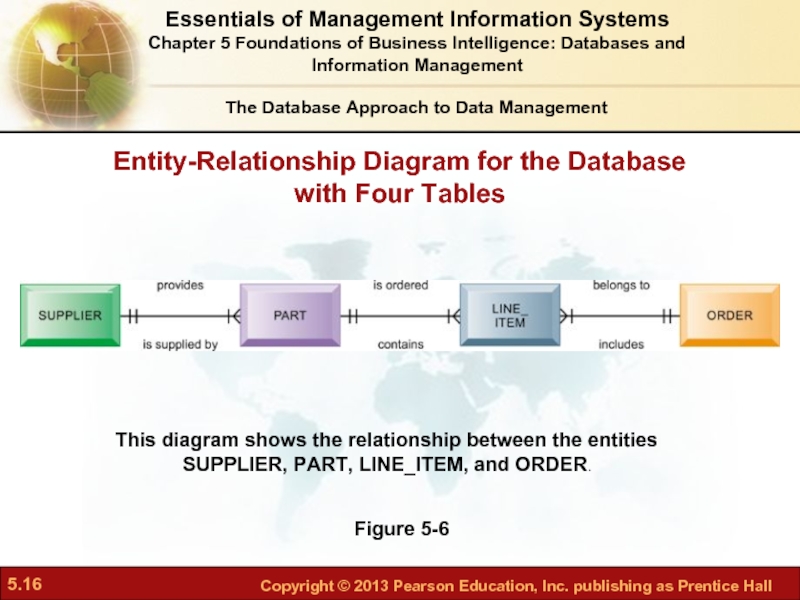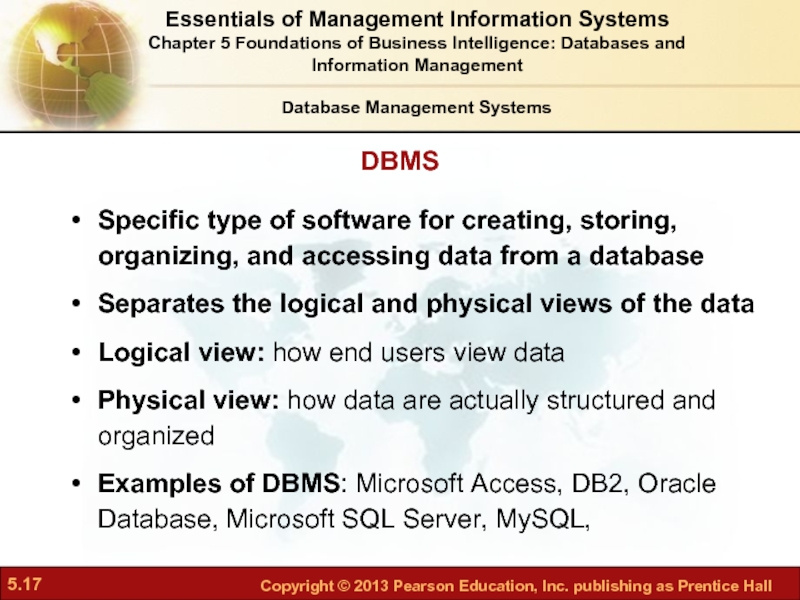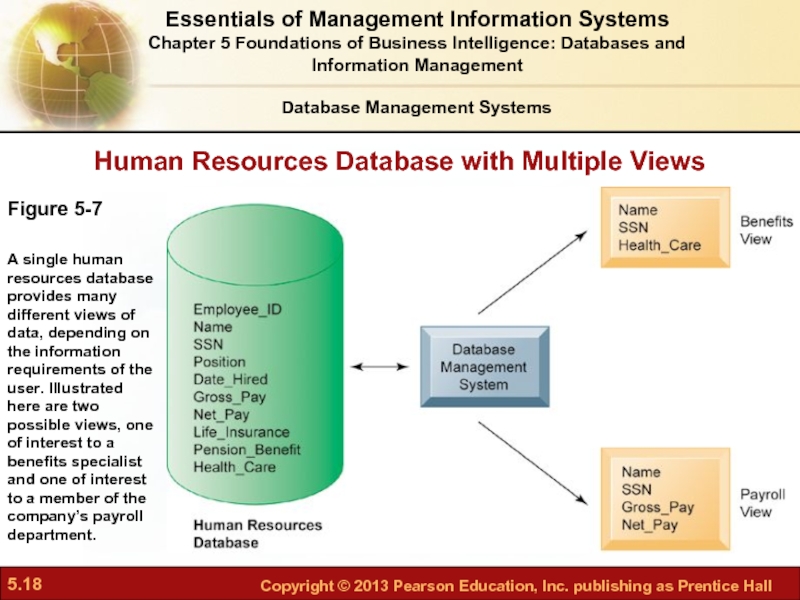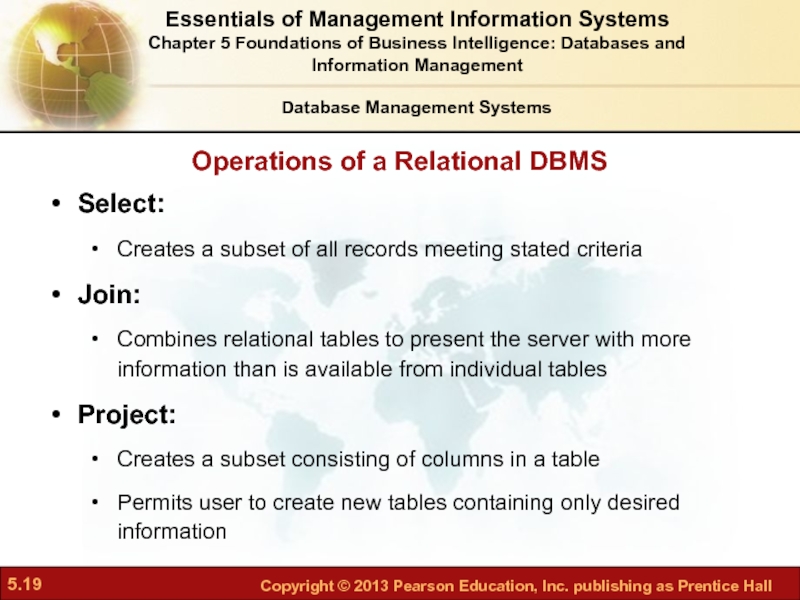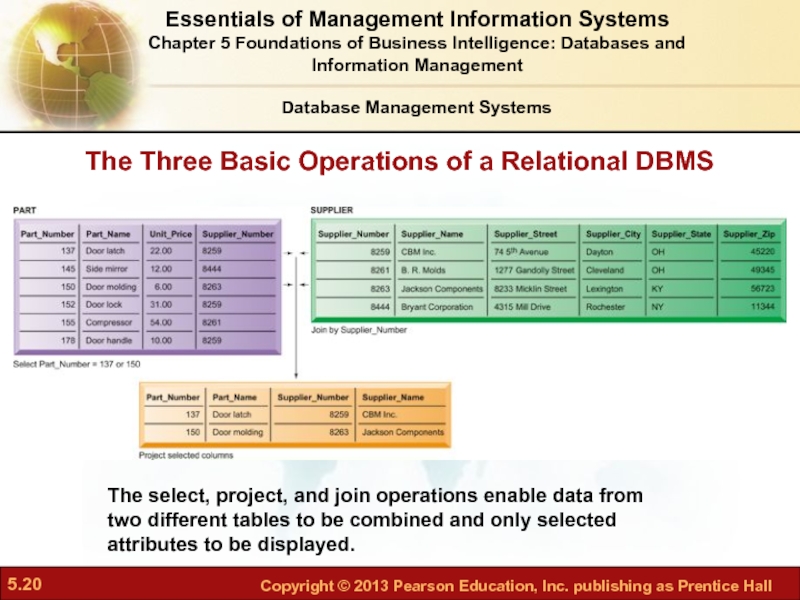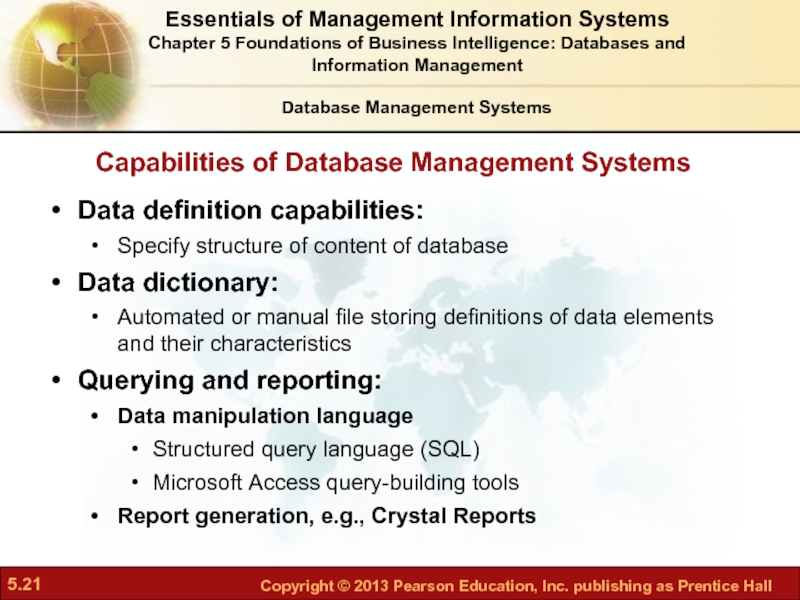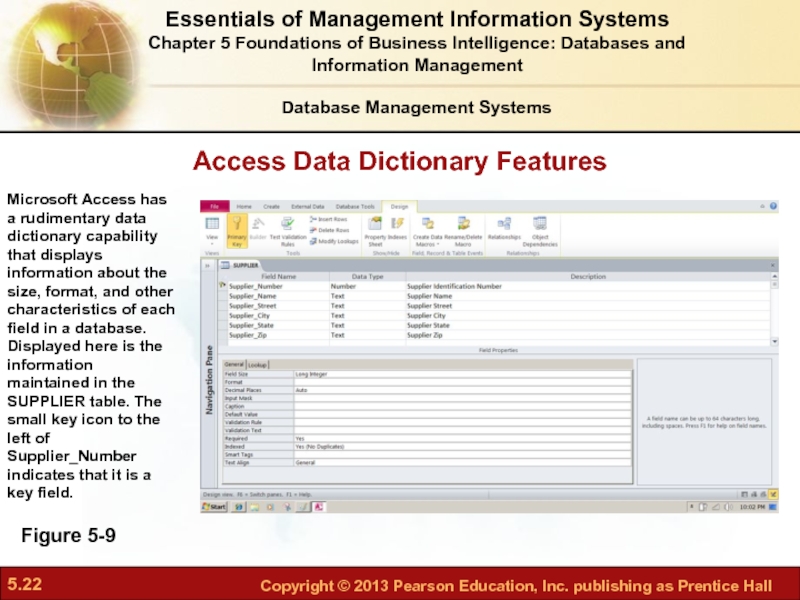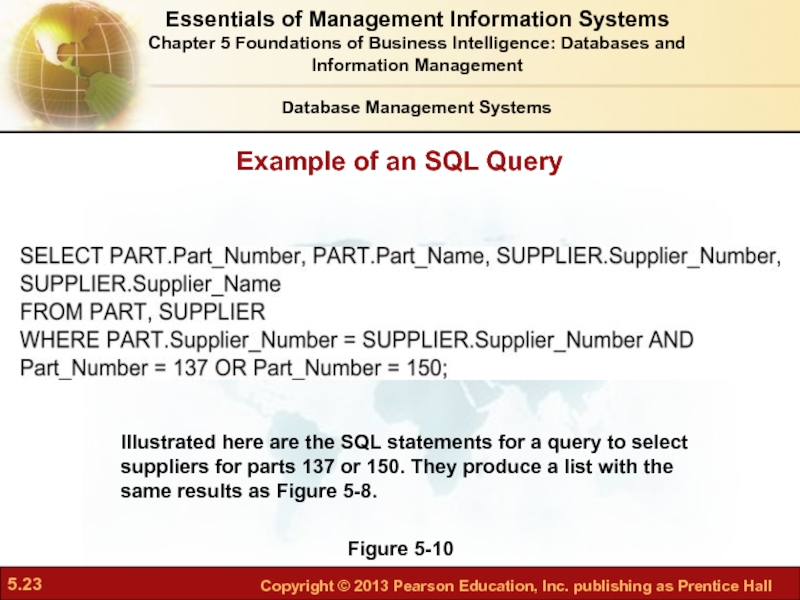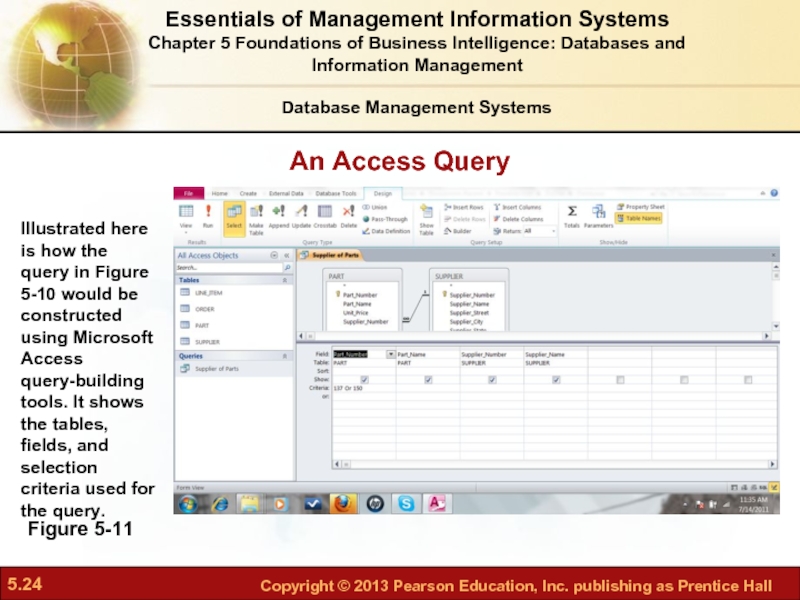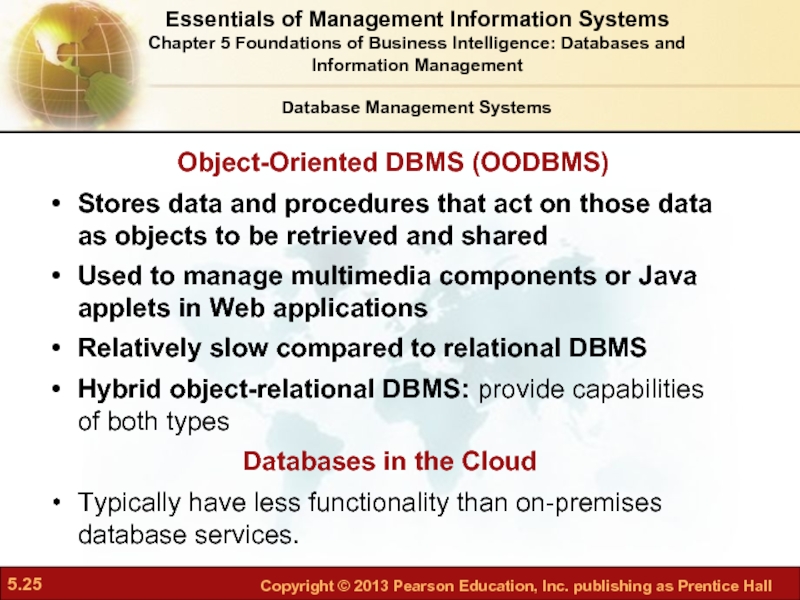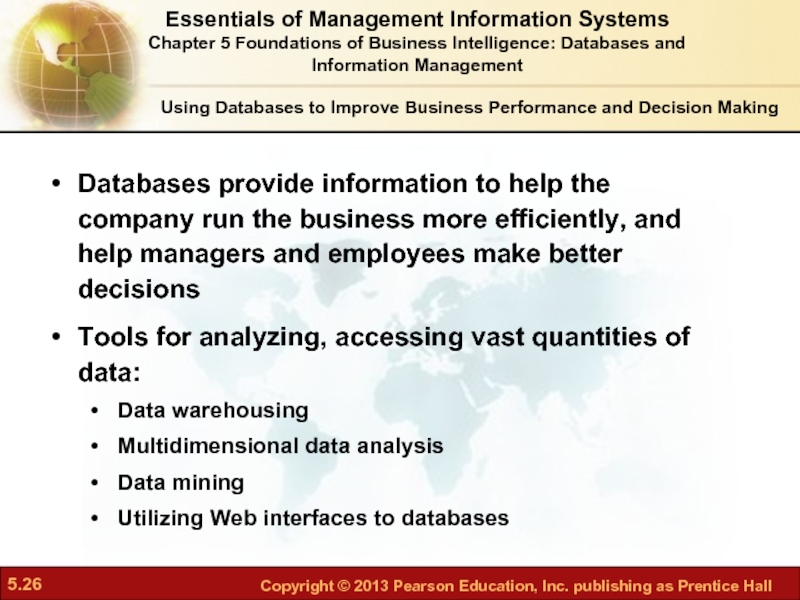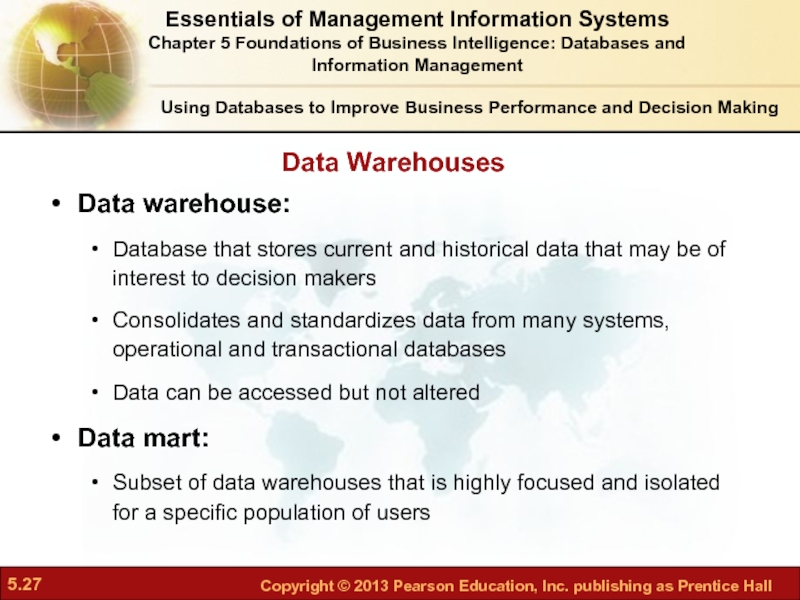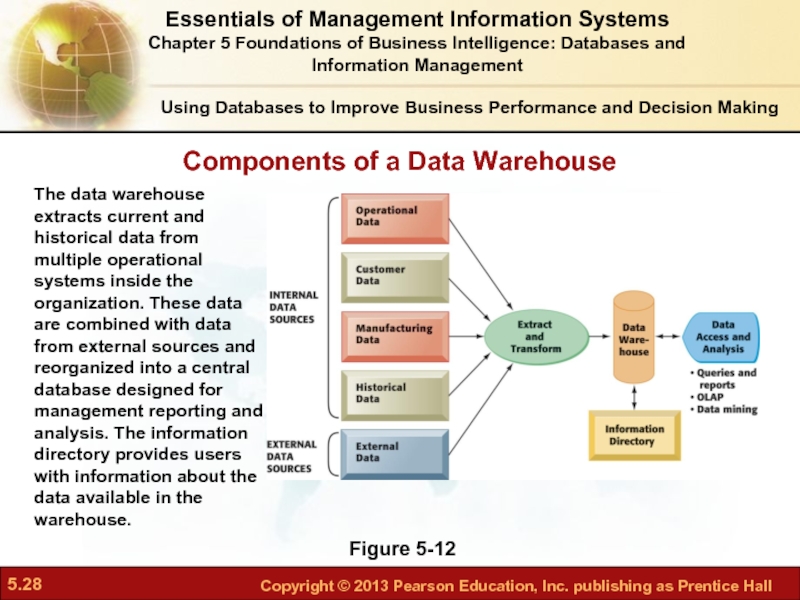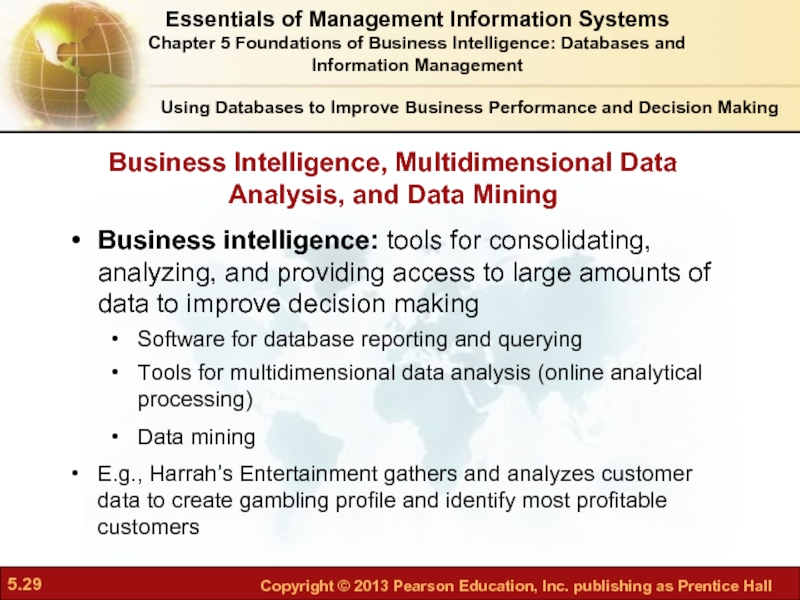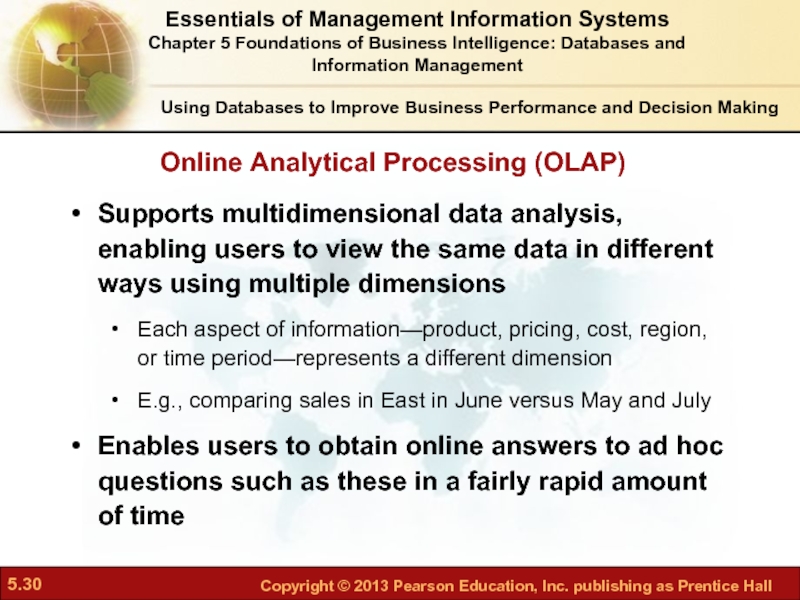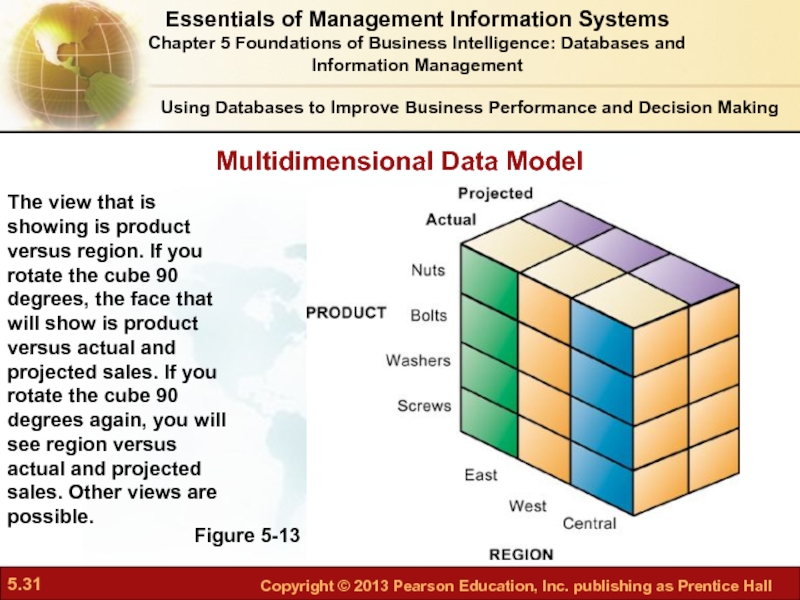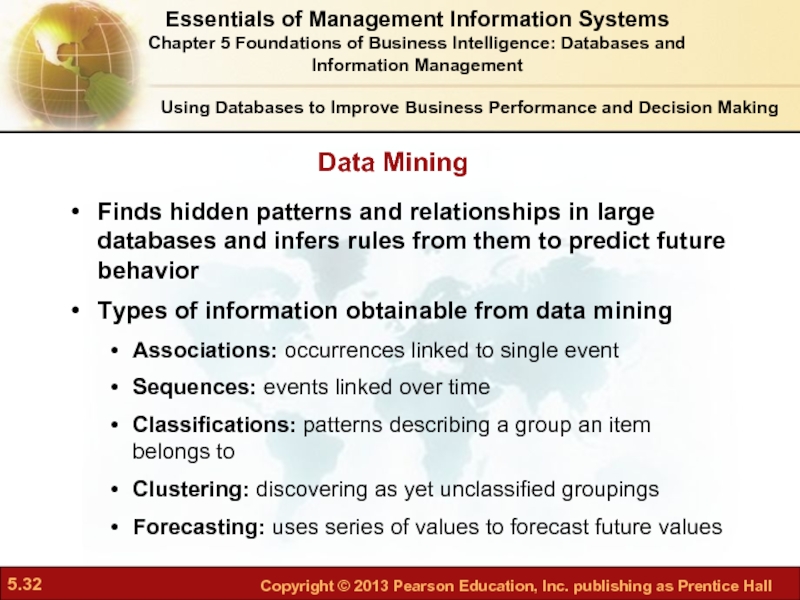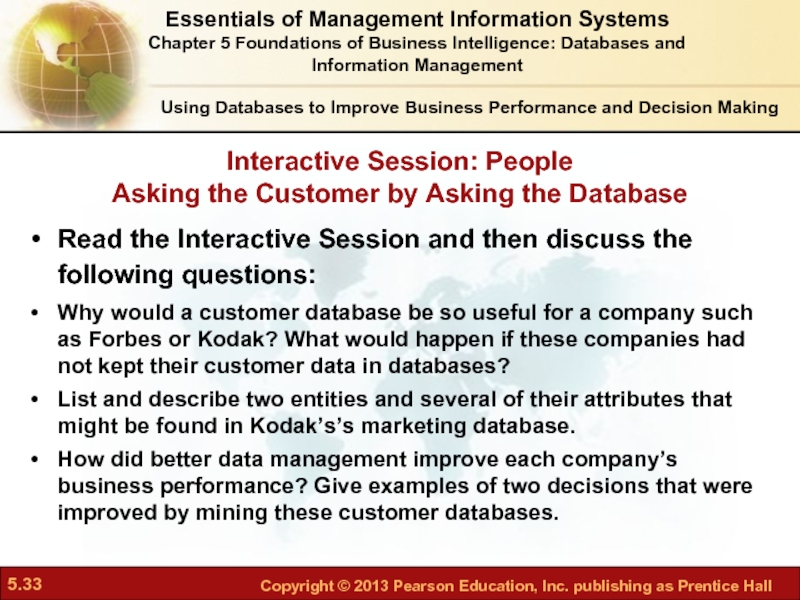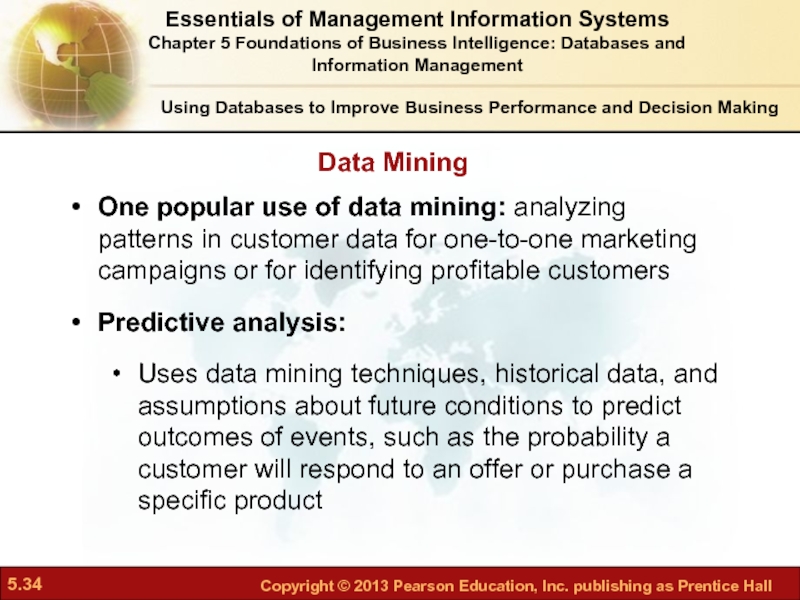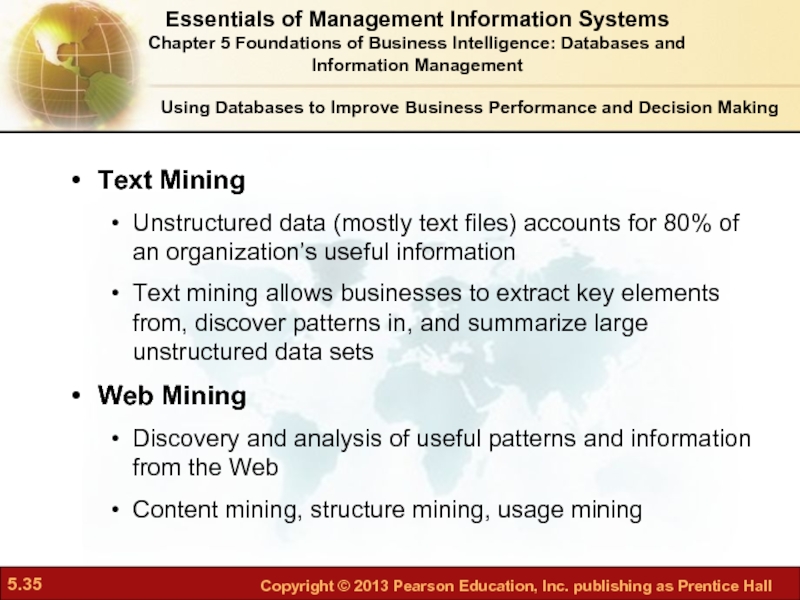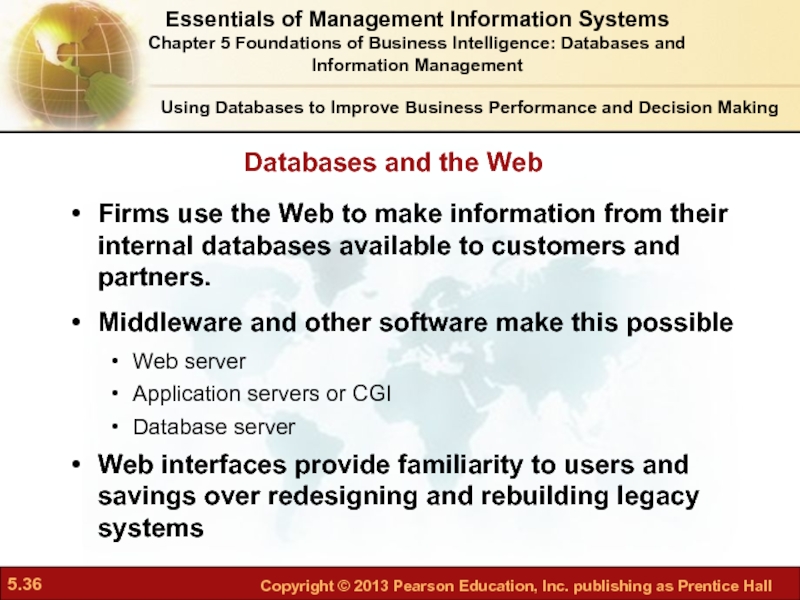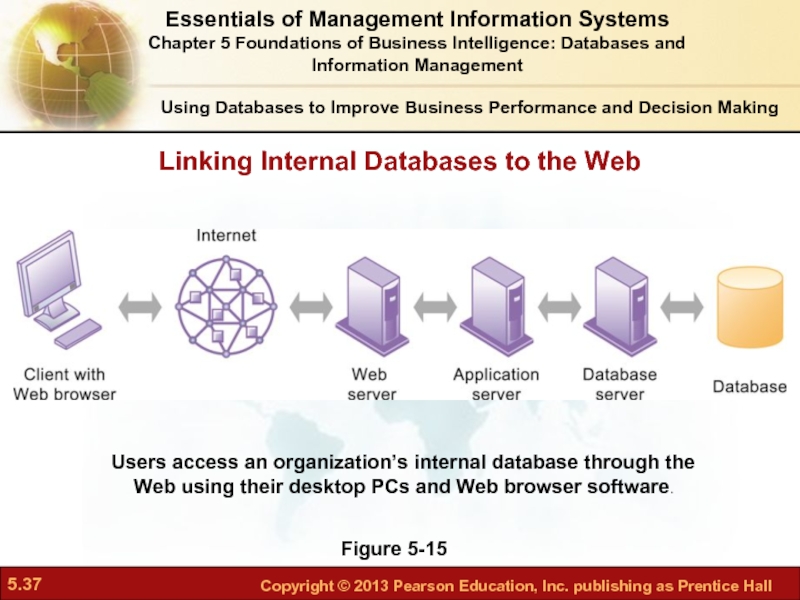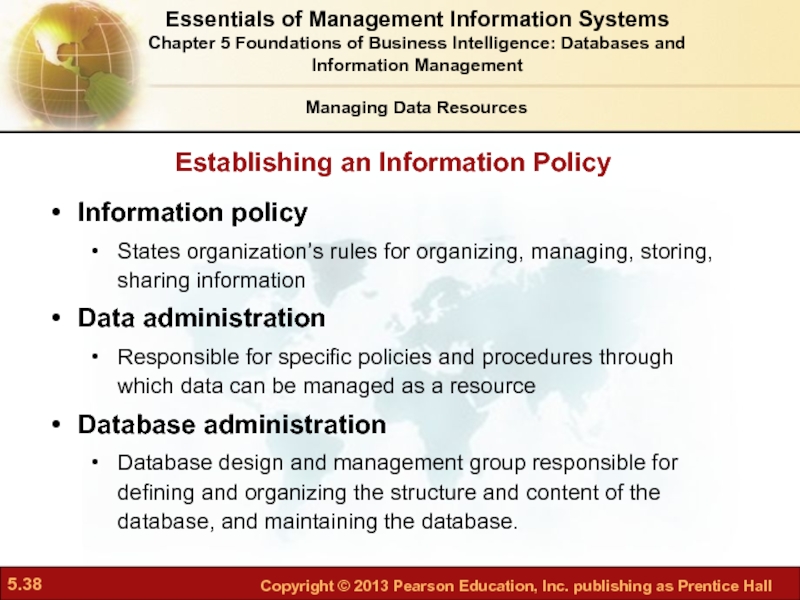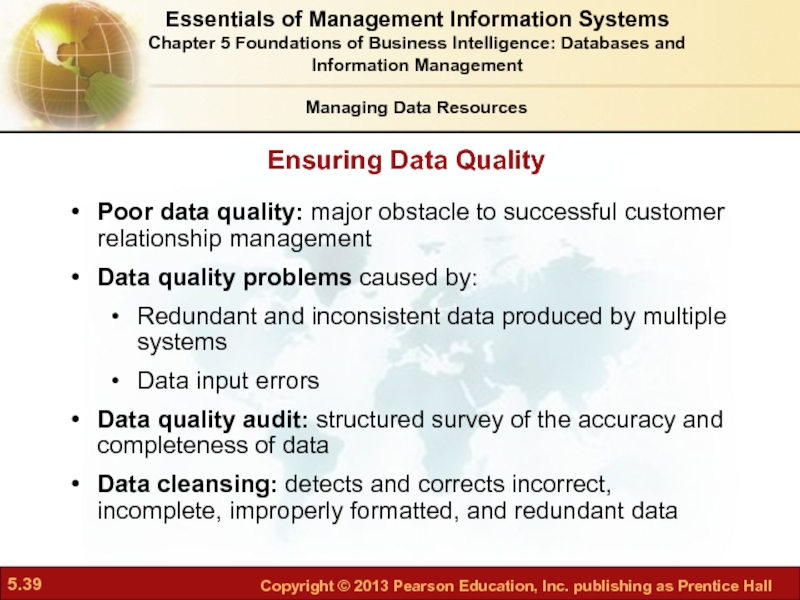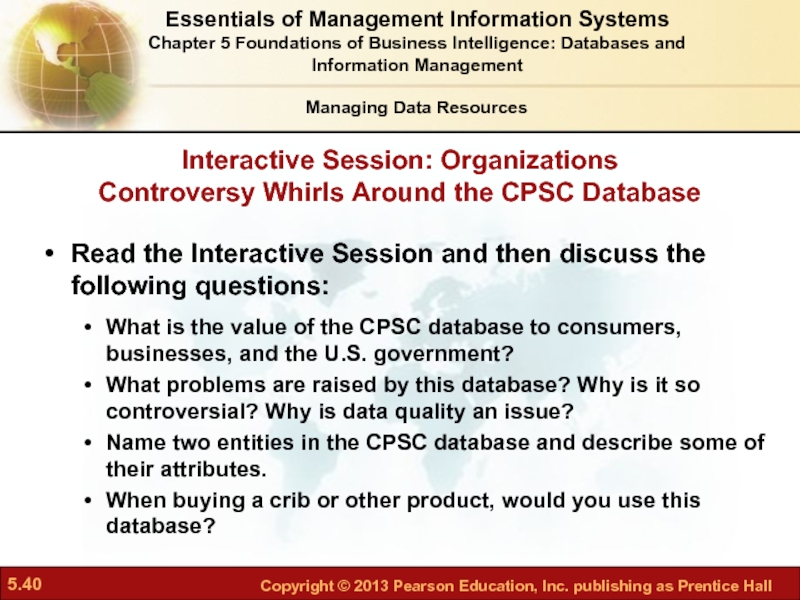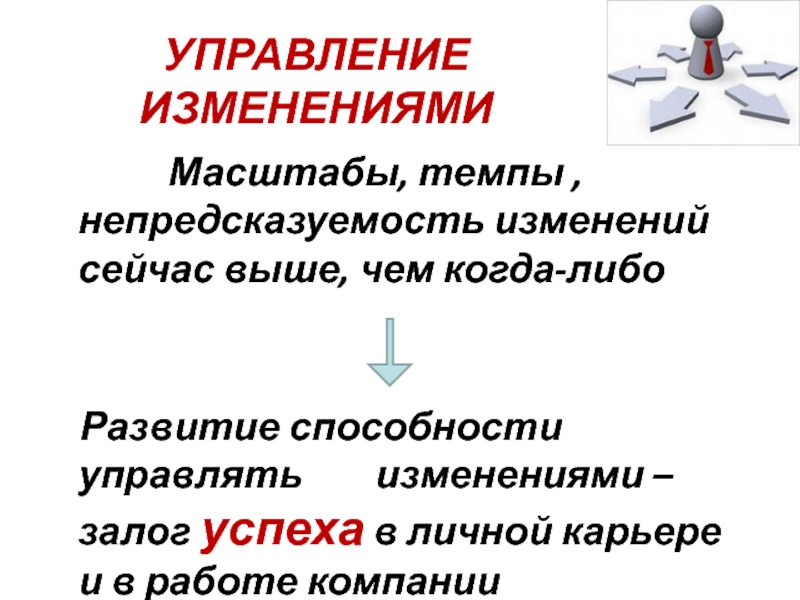- Главная
- Разное
- Дизайн
- Бизнес и предпринимательство
- Аналитика
- Образование
- Развлечения
- Красота и здоровье
- Финансы
- Государство
- Путешествия
- Спорт
- Недвижимость
- Армия
- Графика
- Культурология
- Еда и кулинария
- Лингвистика
- Английский язык
- Астрономия
- Алгебра
- Биология
- География
- Детские презентации
- Информатика
- История
- Литература
- Маркетинг
- Математика
- Медицина
- Менеджмент
- Музыка
- МХК
- Немецкий язык
- ОБЖ
- Обществознание
- Окружающий мир
- Педагогика
- Русский язык
- Технология
- Физика
- Философия
- Химия
- Шаблоны, картинки для презентаций
- Экология
- Экономика
- Юриспруденция
Chapter 5. Foundations of business intelligence: databases and information management презентация
Содержание
- 1. Chapter 5. Foundations of business intelligence: databases and information management
- 2. Student Learning Objectives Essentials of Management Information
- 3. What is the role of information policy
- 4. Banco de Credito Del Peru Banks on
- 5. SAP integrated software suite included modules for
- 6. Essentials of Management Information Systems Chapter 5
- 7. The Database Approach to Data Management Database:
- 8. The Database Approach to Data Management Relational
- 9. A Relational Database Table Figure 5-1 A
- 10. The PART Table Figure 5-2 Data for
- 11. The Database Approach to Data Management Establishing
- 12. A Simple Entity-Relationship Diagram Figure 5-3 This
- 13. The Database Approach to Data Management Normalization
- 14. Sample Order Report Figure 5-4 The shaded
- 15. The Final Database Design with Sample Records
- 16. Entity-Relationship Diagram for the Database with Four
- 17. Specific type of software for creating, storing,
- 18. Human Resources Database with Multiple Views Figure
- 19. Operations of a Relational DBMS Select:
- 20. The Three Basic Operations of a Relational
- 21. Capabilities of Database Management Systems Data definition
- 22. Access Data Dictionary Features Figure 5-9 Microsoft
- 23. Example of an SQL Query Figure 5-10
- 24. An Access Query Figure 5-11 Illustrated here
- 25. Object-Oriented DBMS (OODBMS) Stores data and procedures
- 26. Using Databases to Improve Business Performance
- 27. Data Warehouses Using Databases to Improve
- 28. Components of a Data Warehouse Figure 5-12
- 29. Business intelligence: tools for consolidating, analyzing, and
- 30. Supports multidimensional data analysis, enabling users to
- 31. Using Databases to Improve Business Performance and
- 32. Finds hidden patterns and relationships in large
- 33. Interactive Session: People Asking the Customer by
- 34. One popular use of data mining: analyzing
- 35. Text Mining Unstructured data (mostly text files)
- 36. Firms use the Web to make information
- 37. Using Databases to Improve Business Performance and
- 38. Establishing an Information Policy Managing Data Resources
- 39. Ensuring Data Quality Poor data quality: major
- 40. Read the Interactive Session and then discuss
Слайд 15
Chapter
Foundations of Business Intelligence: Databases and Information Management
Video Cases:
Case
Case 2 Data Warehousing at REI: Understanding the Customer
Слайд 2Student Learning Objectives
Essentials of Management Information Systems
Chapter 5 Foundations of Business
How does a relational database organize data, and how does it differ from an object-oriented database?
What are the principles of a database management system?
What are the principal tools and technologies for accessing information from databases to improve business performance and decision making?
Слайд 3What is the role of information policy and data administration in
Why is data quality assurance so important for a business?
Student Learning Objectives
Essentials of Management Information Systems
Chapter 5 Foundations of Business Intelligence: Databases and
Information Management
Слайд 4Banco de Credito Del Peru Banks on Better Data Management
Problem: Multiple
Solution: Replace disparate legacy systems with single repository for business information
Essentials of Management Information Systems
Chapter 5 Foundations of Business Intelligence: Databases and
Information Management
Слайд 5SAP integrated software suite included modules for enterprise resource planning and
Demonstrates IT’s role in successful data management
Illustrates digital technology’s ability to lower costs while improving performance
Essentials of Management Information Systems
Chapter 5 Foundations of Business Intelligence: Databases and
Information Management
Banco de Credito Del Peru Banks on Better Data Management
Слайд 6Essentials of Management Information Systems
Chapter 5 Foundations of Business Intelligence: Databases
Banco de Credito Del Peru Banks on Better Data Management
Слайд 7The Database Approach to Data Management
Database:
Collection of related files containing
Prior to digital databases, business used file cabinets with paper files
Entity:
Generalized category representing person, place, thing on which we store and maintain information
E.g., SUPPLIER, PART
Attributes:
Specific characteristics of each entity:
SUPPLIER name, address
PART description, unit price, supplier
Essentials of Management Information Systems
Chapter 5 Foundations of Business Intelligence: Databases and
Information Management
Слайд 8The Database Approach to Data Management
Relational database:
Organize data into two-dimensional tables
One table for each entity:
E.g., (CUSTOMER, SUPPLIER, PART, SALES)
Fields (columns) store data representing an attribute.
Rows store data for separate records, or tuples.
Key field: uniquely identifies each record.
Primary key:
One field in each table
Cannot be duplicated
Provides unique identifier for all information in any row
Essentials of Management Information Systems
Chapter 5 Foundations of Business Intelligence: Databases and
Information Management
Слайд 9A Relational Database Table
Figure 5-1
A relational database organizes data in the
The Database Approach to Data Management
Essentials of Management Information Systems
Chapter 5 Foundations of Business Intelligence: Databases and
Information Management
Слайд 10The PART Table
Figure 5-2
Data for the entity PART have their own
The Database Approach to Data Management
Essentials of Management Information Systems
Chapter 5 Foundations of Business Intelligence: Databases and
Information Management
Слайд 11The Database Approach to Data Management
Establishing relationships
Entity-relationship diagram
Used to clarify table
Relational database tables may have:
One-to-one relationship
One-to-many relationship
Many-to-many relationship
Requires “Join table” or Intersection relation that links the two tables to join information
Essentials of Management Information Systems
Chapter 5 Foundations of Business Intelligence: Databases and
Information Management
Слайд 12A Simple Entity-Relationship Diagram
Figure 5-3
This diagram shows the relationship between the
The Database Approach to Data Management
Essentials of Management Information Systems
Chapter 5 Foundations of Business Intelligence: Databases and
Information Management
Слайд 13The Database Approach to Data Management
Normalization
Process of streamlining complex groups of
Minimize redundant data elements
Minimize awkward many-to-many relationships
Increase stability and flexibility
Referential integrity rules
Used by relational databases to ensure that relationships between coupled tables remain consistent
E.g., when one table has a foreign key that points to another table, you may not add a record to the table with foreign key unless there is a corresponding record in the linked table
Essentials of Management Information Systems
Chapter 5 Foundations of Business Intelligence: Databases and
Information Management
Слайд 14Sample Order Report
Figure 5-4
The shaded areas show which data came from
The Database Approach to Data Management
Essentials of Management Information Systems
Chapter 5 Foundations of Business Intelligence: Databases and
Information Management
Слайд 15The Final Database Design with Sample Records
Figure 5-5
The final design of
The Database Approach to Data Management
Essentials of Management Information Systems
Chapter 5 Foundations of Business Intelligence: Databases and
Information Management
Слайд 16Entity-Relationship Diagram for the Database
with Four Tables
Figure 5-6
This diagram shows the
The Database Approach to Data Management
Essentials of Management Information Systems
Chapter 5 Foundations of Business Intelligence: Databases and
Information Management
Слайд 17Specific type of software for creating, storing, organizing, and accessing data
Separates the logical and physical views of the data
Logical view: how end users view data
Physical view: how data are actually structured and organized
Examples of DBMS: Microsoft Access, DB2, Oracle Database, Microsoft SQL Server, MySQL,
DBMS
Database Management Systems
Essentials of Management Information Systems
Chapter 5 Foundations of Business Intelligence: Databases and
Information Management
Слайд 18Human Resources Database with Multiple Views
Figure 5-7
A single human resources database
Database Management Systems
Essentials of Management Information Systems
Chapter 5 Foundations of Business Intelligence: Databases and
Information Management
Слайд 19Operations of a Relational DBMS
Select:
Creates a subset of all records
Join:
Combines relational tables to present the server with more information than is available from individual tables
Project:
Creates a subset consisting of columns in a table
Permits user to create new tables containing only desired information
Database Management Systems
Essentials of Management Information Systems
Chapter 5 Foundations of Business Intelligence: Databases and
Information Management
Слайд 20The Three Basic Operations of a Relational DBMS
Figure 5-8
The select, project,
Database Management Systems
Essentials of Management Information Systems
Chapter 5 Foundations of Business Intelligence: Databases and
Information Management
Слайд 21Capabilities of Database Management Systems
Data definition capabilities:
Specify structure of content of
Data dictionary:
Automated or manual file storing definitions of data elements and their characteristics
Querying and reporting:
Data manipulation language
Structured query language (SQL)
Microsoft Access query-building tools
Report generation, e.g., Crystal Reports
Database Management Systems
Essentials of Management Information Systems
Chapter 5 Foundations of Business Intelligence: Databases and
Information Management
Слайд 22Access Data Dictionary Features
Figure 5-9
Microsoft Access has a rudimentary data dictionary
Database Management Systems
Essentials of Management Information Systems
Chapter 5 Foundations of Business Intelligence: Databases and
Information Management
Слайд 23Example of an SQL Query
Figure 5-10
Illustrated here are the SQL statements
Database Management Systems
Essentials of Management Information Systems
Chapter 5 Foundations of Business Intelligence: Databases and
Information Management
Слайд 24An Access Query
Figure 5-11
Illustrated here is how the query in Figure
Database Management Systems
Essentials of Management Information Systems
Chapter 5 Foundations of Business Intelligence: Databases and
Information Management
Слайд 25Object-Oriented DBMS (OODBMS)
Stores data and procedures that act on those data
Used to manage multimedia components or Java applets in Web applications
Relatively slow compared to relational DBMS
Hybrid object-relational DBMS: provide capabilities of both types
Databases in the Cloud
Typically have less functionality than on-premises database services.
Database Management Systems
Essentials of Management Information Systems
Chapter 5 Foundations of Business Intelligence: Databases and
Information Management
Слайд 26
Using Databases to Improve Business Performance and Decision Making
Databases provide information
Tools for analyzing, accessing vast quantities of data:
Data warehousing
Multidimensional data analysis
Data mining
Utilizing Web interfaces to databases
Essentials of Management Information Systems
Chapter 5 Foundations of Business Intelligence: Databases and
Information Management
Слайд 27
Data Warehouses
Using Databases to Improve Business Performance and Decision Making
Data warehouse:
Database
Consolidates and standardizes data from many systems, operational and transactional databases
Data can be accessed but not altered
Data mart:
Subset of data warehouses that is highly focused and isolated for a specific population of users
Essentials of Management Information Systems
Chapter 5 Foundations of Business Intelligence: Databases and
Information Management
Слайд 28Components of a Data Warehouse
Figure 5-12
The data warehouse extracts current and
Using Databases to Improve Business Performance and Decision Making
Essentials of Management Information Systems
Chapter 5 Foundations of Business Intelligence: Databases and
Information Management
Слайд 29Business intelligence: tools for consolidating, analyzing, and providing access to large
Software for database reporting and querying
Tools for multidimensional data analysis (online analytical processing)
Data mining
E.g., Harrah’s Entertainment gathers and analyzes customer data to create gambling profile and identify most profitable customers
Business Intelligence, Multidimensional Data Analysis, and Data Mining
Using Databases to Improve Business Performance and Decision Making
Essentials of Management Information Systems
Chapter 5 Foundations of Business Intelligence: Databases and
Information Management
Слайд 30Supports multidimensional data analysis, enabling users to view the same data
Each aspect of information—product, pricing, cost, region, or time period—represents a different dimension
E.g., comparing sales in East in June versus May and July
Enables users to obtain online answers to ad hoc questions such as these in a fairly rapid amount of time
Online Analytical Processing (OLAP)
Using Databases to Improve Business Performance and Decision Making
Essentials of Management Information Systems
Chapter 5 Foundations of Business Intelligence: Databases and
Information Management
Слайд 31Using Databases to Improve Business Performance and Decision Making
Figure 5-13
The view
Multidimensional Data Model
Essentials of Management Information Systems
Chapter 5 Foundations of Business Intelligence: Databases and
Information Management
Слайд 32Finds hidden patterns and relationships in large databases and infers rules
Types of information obtainable from data mining
Associations: occurrences linked to single event
Sequences: events linked over time
Classifications: patterns describing a group an item belongs to
Clustering: discovering as yet unclassified groupings
Forecasting: uses series of values to forecast future values
Data Mining
Using Databases to Improve Business Performance and Decision Making
Essentials of Management Information Systems
Chapter 5 Foundations of Business Intelligence: Databases and
Information Management
Слайд 33Interactive Session: People
Asking the Customer by Asking the Database
Using Databases to
Read the Interactive Session and then discuss the following questions:
Why would a customer database be so useful for a company such as Forbes or Kodak? What would happen if these companies had not kept their customer data in databases?
List and describe two entities and several of their attributes that might be found in Kodak’s’s marketing database.
How did better data management improve each company’s business performance? Give examples of two decisions that were improved by mining these customer databases.
Essentials of Management Information Systems
Chapter 5 Foundations of Business Intelligence: Databases and
Information Management
Слайд 34One popular use of data mining: analyzing patterns in customer data
Predictive analysis:
Uses data mining techniques, historical data, and assumptions about future conditions to predict outcomes of events, such as the probability a customer will respond to an offer or purchase a specific product
Data Mining
Using Databases to Improve Business Performance and Decision Making
Essentials of Management Information Systems
Chapter 5 Foundations of Business Intelligence: Databases and
Information Management
Слайд 35Text Mining
Unstructured data (mostly text files) accounts for 80% of an
Text mining allows businesses to extract key elements from, discover patterns in, and summarize large unstructured data sets
Web Mining
Discovery and analysis of useful patterns and information from the Web
Content mining, structure mining, usage mining
Using Databases to Improve Business Performance and Decision Making
Essentials of Management Information Systems
Chapter 5 Foundations of Business Intelligence: Databases and
Information Management
Слайд 36Firms use the Web to make information from their internal databases
Middleware and other software make this possible
Web server
Application servers or CGI
Database server
Web interfaces provide familiarity to users and savings over redesigning and rebuilding legacy systems
Databases and the Web
Using Databases to Improve Business Performance and Decision Making
Essentials of Management Information Systems
Chapter 5 Foundations of Business Intelligence: Databases and
Information Management
Слайд 37Using Databases to Improve Business Performance and Decision Making
Figure 5-15
Users access
Linking Internal Databases to the Web
Essentials of Management Information Systems
Chapter 5 Foundations of Business Intelligence: Databases and
Information Management
Слайд 38Establishing an Information Policy
Managing Data Resources
Information policy
States organization’s rules for organizing,
Data administration
Responsible for specific policies and procedures through which data can be managed as a resource
Database administration
Database design and management group responsible for defining and organizing the structure and content of the database, and maintaining the database.
Essentials of Management Information Systems
Chapter 5 Foundations of Business Intelligence: Databases and
Information Management
Слайд 39Ensuring Data Quality
Poor data quality: major obstacle to successful customer relationship
Data quality problems caused by:
Redundant and inconsistent data produced by multiple systems
Data input errors
Data quality audit: structured survey of the accuracy and completeness of data
Data cleansing: detects and corrects incorrect, incomplete, improperly formatted, and redundant data
Managing Data Resources
Essentials of Management Information Systems
Chapter 5 Foundations of Business Intelligence: Databases and
Information Management
Слайд 40Read the Interactive Session and then discuss the following questions:
What is
What problems are raised by this database? Why is it so controversial? Why is data quality an issue?
Name two entities in the CPSC database and describe some of their attributes.
When buying a crib or other product, would you use this database?
Interactive Session: Organizations
Controversy Whirls Around the CPSC Database
Managing Data Resources
Essentials of Management Information Systems
Chapter 5 Foundations of Business Intelligence: Databases and
Information Management
